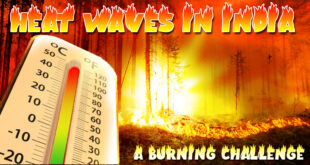Seven decades after Independence, the massive obstacle of caste is still difficult to dislodge
At a recent lecture-demonstration of Koodiyattam, a complex form of Sanskrit theatre practised in Kerala, one of the leading exponents of this beautiful art, Margi Madhu Chakyar, performed an episode from the epic literature titled “Kailasoddharanam”, the lifting of Mount Kailasa. Ravana, finding Mt. Kailasa in the way of his chariot, asks the mighty peak to step aside for him. As Siva’s abode, the mountain refuses. Ravana climbs down from his vehicle, and by sheer physical prowess shifts the colossus. In the complete story, after an angry altercation, Siva, placated, bestows upon Ravana the indestructible weapon Candrahasa, a gleaming curved scimitar.
At the University of British Columbia (UBC), in Vancouver, Canada, on July 12, Margi Madhu performed only the act where Ravana encounters Kailasa as an obstruction, lifts it, and sets it down elsewhere. Madhu’s ability to conjure the incalculably heavy weight of the mountain, the supra-human strength of Ravana and the clash of two titans, one animate and the other inanimate, had many spectators in tears. In the larger Ramayana Ravana may be the anti-hero, but in “Kailasoddharanam”, he is undoubtedly the hero. That night Prof. Panwar analysed the low status of women and sudras in theManusmriti and the Rig Veda . I discussed Sanskrit as a philological resource and a tool of historical research, which nevertheless presents peculiar challenges to women scholars on account of the deeply entrenched orthodoxy and patriarchy of Sanskrit pedagogical environments. Prof. Bose described how as a young student in Kolkata, she was forced to switch from the study of Mimamsa (Vedic Hermeneutics) to Natyasastra (Performance and Aesthetics), because the former was considered a prestigious subject reserved for male scholars, while the latter was a lesser topic open to females.
After this troubling encounter with the regressive face of Indology, watching the Koodiyattam performance inevitably recalled the mountain that is caste. The founders of the republic thought they would dislodge it through Herculean efforts, but generations later, citizens still find it unshaken and their fundamental rights obstructed. Not to suggest that caste society is some holy mountain, a divine abode of the gods, no. But our collective political will to remove this massive social structure has to be profound, shattering and furious. Alas, the unfortunate reality is that prevailing forces of orthodoxy and reaction will demonise, humiliate and attempt to subdue whosoever confronts the gigantic caste system.
Periyar and Ambedkar set fire to the Manusmriti in their radical protest against caste almost a century ago. But in the age of Hindutva, outdated injunctions glorifying a hierarchical and unequal social order have risen again from the ashes. We must be ready with our torches, and our resolve to move mountains.
Source: https://www.thehindu.com/todays-paper/tp-opinion/how-to-move-a-mountain/article24683993.ece
 Chinmaya IAS Academy – Current Affairs Chinmaya IAS Academy – Current Affairs
Chinmaya IAS Academy – Current Affairs Chinmaya IAS Academy – Current Affairs



